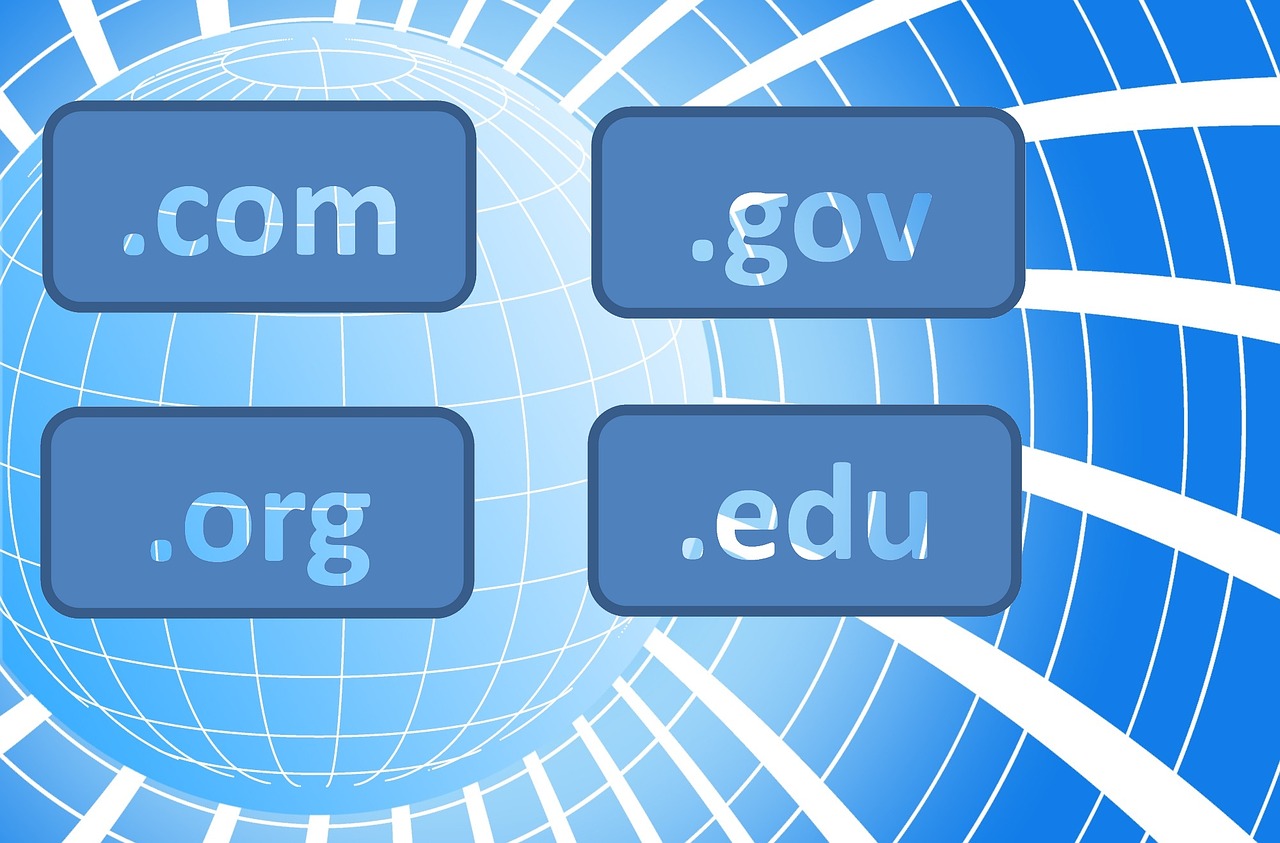
Have you ever wondered why certain educational and non-profit organizations choose to stick with a “.com” domain instead of the more common options like “.edu” or “.org”? It’s a curious decision that seems to defy convention. In this article, we will explore the reasons behind this choice and uncover the motivations that drive some organizations to embrace a different online identity. By understanding their perspective, we can gain insight into the ever-evolving nature of online presence and the unique considerations that shape organizational branding. So, let’s delve into this intriguing topic and discover why some educational and non-profit institutions continue to opt for a “.com” domain.
Legal Considerations
Protection of Trademarks
When it comes to choosing a domain extension for your educational or non-profit organization, one important legal consideration is the protection of trademarks. While “.edu” and “.org” have specific connotations related to education and non-profit respectively, “.com” does not have any such restrictions. This means that organizations opting for a “.com” domain have more freedom in terms of branding and can choose a domain name that aligns better with their organization’s specific goals and values.
Freedom of Expression
Another legal consideration to take into account is the freedom of expression. By choosing a “.com” domain, organizations have the opportunity to express their mission and vision in a more creative and unique way, without being restricted by the predefined meanings associated with “.edu” or “.org”. This allows organizations to stand out in a crowded online environment and communicate their message effectively.
Lack of Regulation
While both “.edu” and “.org” domains are subject to certain regulations and criteria, “.com” domains are relatively more flexible and do not require strict adherence to specific guidelines. This can be beneficial for educational and non-profit organizations that want more autonomy and control over their online presence. With a “.com” domain, organizations have the freedom to make changes to their website content and structure without having to worry about violating any specific regulations.
Perception and Credibility
Perceived Professionalism
The domain extension you choose can play a significant role in shaping the perceived professionalism of your organization. While “.edu” and “.org” are often associated with educational institutions and non-profit organizations respectively, they may also be subject to certain preconceived notions or expectations. On the other hand, a “.com” extension can give your organization a more business-like image, making it appear more professional and capable in the eyes of potential stakeholders.
Familiarity and Trust
In the online world, familiarity breeds trust. Many internet users are more familiar with the “.com” domain extension due to its widespread usage by commercial enterprises. By choosing a “.com” domain, your organization can tap into this sense of familiarity and establish trust with your audience. This can be particularly important for educational and non-profit organizations that rely on donations and the goodwill of the community.
Less Bias in Perception
While “.edu” and “.org” domains may carry certain expectations or biases, a “.com” domain is relatively neutral and does not predispose visitors to any particular perception. This can be advantageous for organizations that want to present themselves without being pigeonholed. By opting for a “.com” domain, your organization can have more control over how it is perceived and avoid any preconceived notions associated with specific domain extensions.

Flexibility and Scalability
Ease of Website Management
One of the advantages of choosing a “.com” domain is the ease of website management. The widespread availability of website management tools and platforms that cater specifically to “.com” domains makes it easier for organizations to create and maintain their online presence. With a wide range of resources and support available, organizations can focus on their core activities without spending excessive time or resources on website maintenance.
Scalability and Growth
When considering the long-term goals of your educational or non-profit organization, scalability and growth are key considerations. By opting for a “.com” domain, you open up the possibility of expanding your services or offerings in the future. The broader nature of a “.com” domain allows for more flexibility in terms of the types of activities your organization can engage in, making it an attractive option for organizations with ambitious growth plans.
Ability to Expand Services
A “.com” domain enables your organization to not only expand services but also explore new avenues of revenue generation. By adopting a more business-oriented approach, educational and non-profit organizations can diversify their operations and explore entrepreneurial opportunities that align with their mission. With a “.com” domain, organizations can leverage the potential for innovation and adapt to changing market demands, ensuring the sustainability of their mission and impact.
Cost and Budget Constraints
Pricing Differences
Another consideration when deciding on a domain extension is the cost associated with acquiring and maintaining the domain. In many cases, “.com” domains tend to be more cost-effective compared to “.edu” or “.org” domains. The additional prestige and exclusivity of the other domain extensions often come at a higher price. This cost consideration can be significant for educational and non-profit organizations, especially when working within limited budgets and resource constraints.
Limited Funding
Educational and non-profit organizations often operate on limited funding and must carefully allocate their resources. Opting for a “.com” domain can be a cost-effective choice, allowing organizations to allocate more funds towards their core activities rather than spending a substantial amount on acquiring and maintaining a specific domain extension.
Flexibility in Spending
Choosing a “.com” domain also provides organizations with greater flexibility in spending their limited budget. With the ability to obtain a domain at a more affordable price, organizations can allocate those saved funds towards other marketing or operational expenses. This flexibility in spending allows organizations to make strategic decisions that align better with their overall mission and goals.

Technical Limitations
Limited Domain Availability
One potential limitation of choosing a “.com” domain is the limited availability of desirable domain names. With the popularity of “.com” extensions, it can be challenging to find an available domain name that aligns perfectly with your organization’s name or mission. However, with some creativity and flexibility, organizations can still secure a unique and memorable domain name that reflects their identity and purpose.
Legacy Systems and Website Migration
For educational and non-profit organizations that have been in existence for a considerable period, migrating from an existing website with a different domain extension to a “.com” domain may pose technical challenges. Legacy systems and established online presence might need to be updated and aligned with the new domain. However, with proper planning and support from experienced professionals, migrating to a “.com” domain can be a smooth process that opens up new possibilities for growth and engagement.
Search Engine Optimization
Search engine optimization (SEO) is a critical aspect of any organization’s online presence. The choice of domain extension can impact an organization’s SEO efforts. While “.edu” and “.org” domains may have some inherent advantage in terms of search engine rankings, a well-optimized “.com” domain can achieve comparable visibility and discoverability in search engine results. By utilizing effective SEO techniques, organizations can overcome any potential disadvantages and ensure their website receives the visibility it deserves.
Accessibility and Reach
Global Reach
One of the significant advantages of a “.com” domain is its global reach. With the widespread recognition and usage of “.com” domains, organizations can establish a presence that extends beyond geographical boundaries. This global reach opens up opportunities for collaboration, partnerships, and reaching a broader audience interested in your organization’s mission and activities.
Targeting Wider Audience
While “.edu” and “.org” domains may imply a more specific target audience, a “.com” domain allows organizations to cast a wider net and appeal to a broader audience. This flexibility can be advantageous for educational and non-profit organizations that want to expand their reach and create a more inclusive environment. By choosing a “.com” domain, organizations can communicate their message to a diverse set of individuals who may not have otherwise engaged with a more narrowly targeted domain extension.
Language Flexibility
In today’s interconnected world, organizations need to consider language flexibility when establishing their online presence. “.com” domains have less inherent language restrictions compared to “.edu” and “.org” domains, which are primarily associated with English-speaking audiences. By choosing a “.com” domain, organizations can cater to multilingual audiences and convey their message in different languages, ensuring accessibility and inclusivity for a global audience.

Branding and Marketing Strategies
Consistent Branding
Effective branding is crucial for any organization, including educational and non-profit entities. A “.com” domain can help organizations maintain consistent branding across different marketing channels. By aligning the domain extension with the overall branding strategy, organizations can reinforce their identity and improve brand recognition. A well-recognized and consistent brand enhances the organization’s credibility and support from stakeholders.
Online Marketing Considerations
In today’s digital age, online marketing plays a vital role in reaching and engaging with target audiences. A “.com” domain can provide educational and non-profit organizations with more flexibility in implementing online marketing strategies. With a broader domain extension, organizations can leverage various marketing tactics such as search engine marketing, social media advertising, and content marketing to increase visibility and drive traffic to their website.
Domain as a Marketing Tool
The choice of domain extension itself can become a powerful marketing tool. Organizations can use a “.com” domain strategically to convey specific messages or evoke certain emotions in their audience. By carefully selecting a domain name that aligns with the organization’s values and mission, organizations can leverage the power of their domain to create a lasting impression and stand out in a competitive landscape.
Partnerships and Collaborations
Collaboration with Other Organizations
Collaboration and partnerships are integral to the success of educational and non-profit organizations. A “.com” domain can facilitate collaborative efforts by eliminating any perceived restrictions or barriers associated with specific domain extensions. By choosing a more neutral and business-oriented domain extension, organizations can approach potential partners from all sectors without any preconceived notions or limitations.
Joint Fundraising and Awareness Campaigns
Fundraising and awareness campaigns often require collaboration with multiple stakeholders. By opting for a “.com” domain, organizations can create a cohesive platform to bring together different parties involved in joint initiatives. The neutral nature of a “.com” domain can contribute to creating a unified branding strategy and enable seamless collaboration, improving the effectiveness of fundraising and awareness efforts.
Simplification of Digital Presence
Maintaining multiple domain extensions for distinct purposes can lead to complexity in managing and monitoring an organization’s online presence. A “.com” domain can simplify the digital landscape by bringing all aspects of the organization under a single umbrella. This consolidation allows for better control and easier administration, facilitating efficient management of the organization’s online presence.
Personal Preferences and Legacy
Organizational History and Tradition
For long-standing educational and non-profit organizations, maintaining a sense of history and tradition is often crucial. While newer domain extensions like “.edu” and “.org” aim to convey specific meanings and association, a “.com” domain provides organizations with the flexibility to honor their legacy and organizational history. By choosing a “.com” domain, organizations can preserve their heritage and seamlessly blend it with their forward-looking initiatives.
Founder’s Personal Connection
In many cases, the personal connection of the founder or key stakeholders with a specific domain extension can play a significant role in the decision-making process. A founder’s preference for a “.com” domain may stem from personal experience or beliefs, which can influence the organization’s choice. This personal connection not only adds a sentimental touch but also contributes to a more familiar and comfortable online presence for key stakeholders.
Ease of Use and Familiarity
Lastly, ease of use and familiarity are critical factors to consider when deciding on a domain extension. “.com” domains have been the most widely recognized and used extensions for decades. By choosing a “.com” domain, organizations can tap into this familiarity and make it easier for stakeholders, including donors and visitors, to find and navigate their website. This simplified user experience ensures that users can easily access the organization’s information, increasing the chances of engagement and support.
Lack of Knowledge and Awareness
Limited Understanding of Domain Extensions
One of the main reasons why some educational and non-profit organizations still opt for “.com” over “.edu” or “.org” is the limited understanding of the distinctions between different domain extensions. Many organizations may not be fully aware of the benefits and implications associated with various domain extensions. This lack of knowledge can lead organizations to default to the more familiar and widely recognized “.com” domain, without considering other options.
Lack of Technical Guidance
Educational and non-profit organizations might not always have access to comprehensive technical guidance when it comes to domain choices. Limited resources and expertise in the technical domain can make it challenging for organizations to navigate the intricacies of domain extensions. Without proper guidance, it’s understandable why some organizations may choose the more straightforward and universally recognized “.com” domain.
Resistance to Change
Change can be challenging, even for organizations. The inertia of sticking to what is familiar and established can cause some educational and non-profit organizations to opt for “.com” domains instead of exploring other domain extensions. The resistance to change may be rooted in concerns about potential disruption or the fear of losing existing branding and recognition. Overcoming this resistance requires a proactive approach to education and a demonstration of the benefits associated with alternative domain extensions.
In conclusion, while there are valid reasons for some educational and non-profit organizations to opt for “.com” over “.edu” or “.org”, it is essential to consider the legal implications, the perception and credibility factors, flexibility and scalability requirements, budget constraints, technical limitations, accessibility and reach considerations, branding and marketing strategies, partnerships and collaborations, personal preferences, and legacy considerations, as well as the lack of knowledge and awareness that might influence the decision-making process. By carefully evaluating these factors and making an informed choice, organizations can establish a strong and impactful online presence that aligns with their mission and goals.







